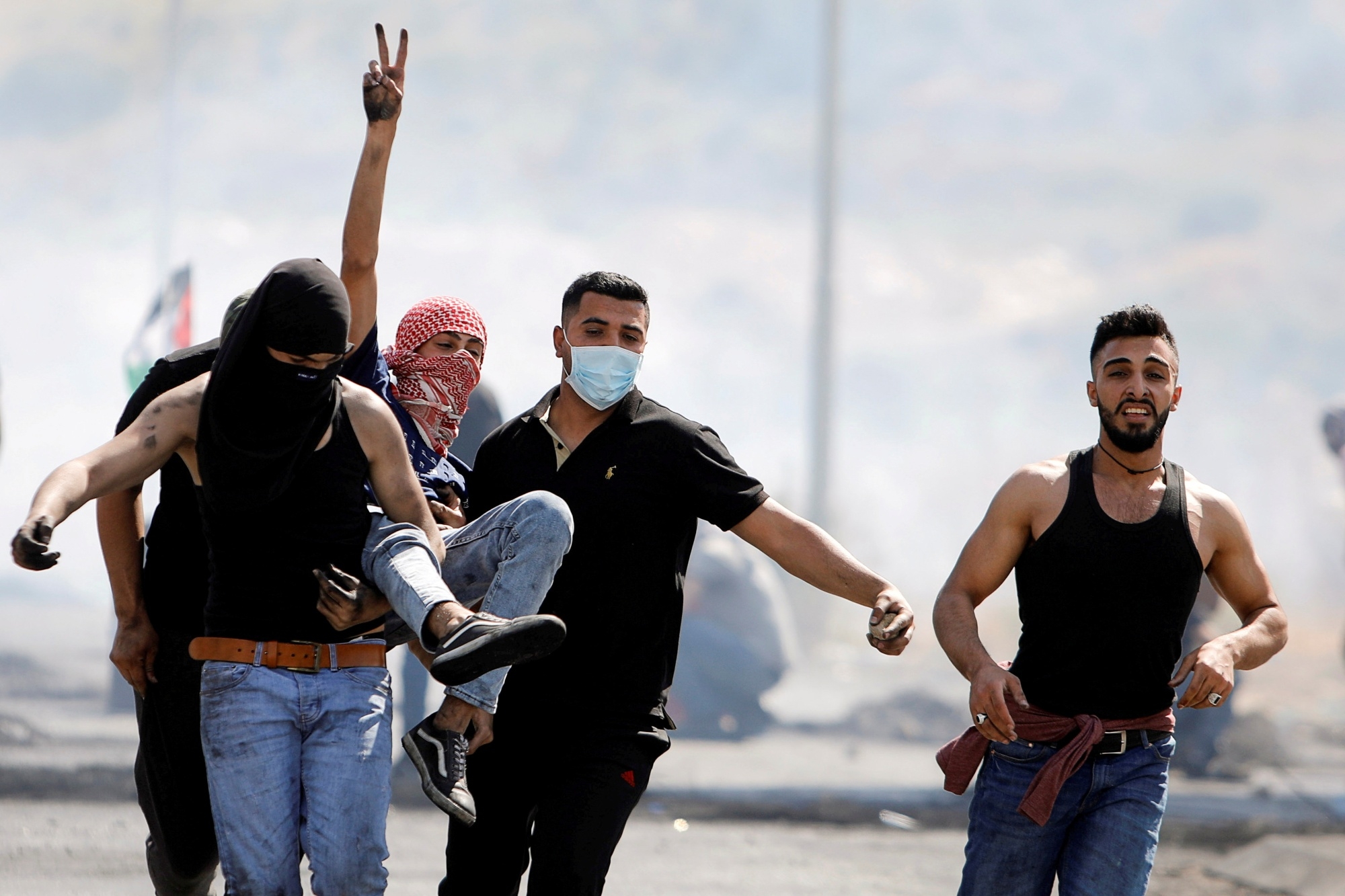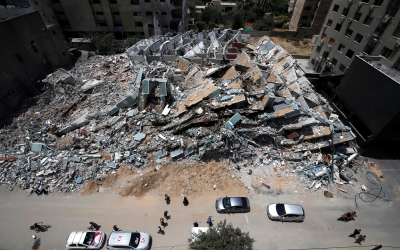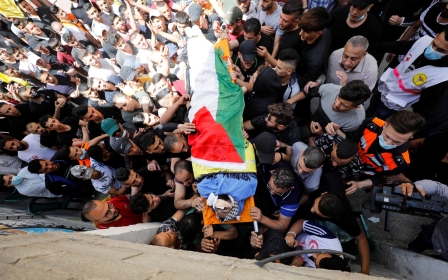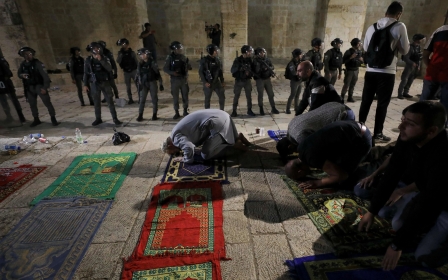Palestinians killed in West Bank as Israeli crackdown intensifies

Israel has become accustomed to cracking down with lethal violence whenever the daily frustrations of Palestinians living in the pressure cooker of military occupation boil over. But it is often dealing with only one front at a time.
This week, however, the state's police and military agencies have been forced to face the consequences of its ongoing displacement of Palestinians in several arenas: raining bombs upon Gaza's densely packed streets while defending the towns and rural areas within range of Hamas' largely improvised rockets; in mixed-population cities where ultra-nationalist Israeli mobs have rampaged, shooting live ammunition; in East Jerusalem, where the latest unrest began with the forced evictions in Sheikh Jarrah and end-of-Ramadan raids on al-Aqsa Mosque protesters.
And now, in the rest of the occupied West Bank, where eleven Palestinians were killed on Friday as the fourth front in this latest uprising opened up. Not for many years has Israel faced such widespread and unified Palestinian solidarity, and with chaos reigning, it remains unclear how it will write this new chapter in its military playbook.
Palestinian officials have confirmed the deaths of all eleven people killed by Israeli forces in separate incidents on Friday.
The first was identified as Mohammed Ruhi Hammad, 30, shot and killed in the town of Silwad, northeast of Ramallah, after allegedly attempting to carry out a car-ramming attack, according to the Israeli army.
Hammad, a construction worker, was planning his wedding and had just completed building the home he was planning to move into with his bride.
Hammad’s mother told MEE that she tried to call him, but that an Israeli officer answered the phone and told her the army had killed her son.
Following the announcement of Hammad’s death, tensions peaked in Silwad, as hundreds of Palestinians came out to march and demand an end to Israeli violence.
Shortly after, a Palestinian man - identified by a Middle East Eye correspondent on the scene as 26-year-old Fahmah resident Youssef Nawasra - was killed near the village of Yabad, in the northern occupied West Bank governorate of Jenin, during a demonstration.
Later, Wafa reported the deaths of Awad Ahmed Harb, 23, and Sharif Khaled Suleiman, 38, killed during demonstrations in the Salfit-area villages of Iskaka and Marada respectively.
Harb was reportedly killed by Israeli settlers who shot at Palestinians in Iskaka. Ammar Harb, an activist, told MEE that Israeli forces had obstructed roads and entrances to Iskaka, preventing ambulances from carrying out life-saving assistance inside the village.
A fifth Palestinian - identified by MEE as Nidal Sael Safadi - was reported killed in the village of Urif, in the Nablus governorate. According to Wafa, Safadi was shot by Israeli forces while trying to confront Israeli settlers who were storming the area.
A sixth Palestinian, 20-year-old Mohammed Shger, was killed during a demonstration in Jericho.
A seventh Palestinian, in his forties - identified by Wafa as Issa Barham - was shot dead by Israeli forces during a protest in Beita, in the Nablus governorate.
An eighth Palestinian, shot in the head by a settler near Hebron, was named as Ismail al-Tobasi.
The ninth and tenth victims were identified as Malek Hamdan, 22, from the village of Salem in Nablus, and Hossam Asaireh, 18, from the town of Asira, also in Nablus.
Late on Friday, an eleventh victim, a man from the city of Tulkarm, was killed. The Palestinian Ministry of Health has yet to confirm his name.
Live ammunition
Murad Abu Karam, an activist from Jabal Sabih in the West Bank district of Nablus, told MEE that Israeli forces had been shooting live bullets extensively at protesting Palestinians, leading to the high number of fatalities.
"The Israeli army is using live ammunition in a very heavy and noticeable manner during these confrontations, in which demonstrators use nothing but stones and Molotov cocktails," he said.
The wave of killings in the West Bank on Friday comes as an Israeli aerial offensive on the besieged Gaza Strip has killed at least 126 Palestinians, including 31 children and 20 women, and injured 950, since Monday. Among those killed include a seven-year-old girl, Buthaina Mahmoud Ubaid, who was hit in the head by shrapnel from an Israeli missile.
Meanwhile, Israeli forces have been confronting Palestinian citizens of Israel - who constitute around 20 percent of the country's population - demonstrating across the country. Ultra-nationalist Jewish-Israelis have also engaged in what have been widely described as lynchings targeting Palestinians.
The wave of violence began last week, as Israeli forces repressed demonstrations against the planned expropriation of Palestinian families in the East Jerusalem Sheikh Jarrah neighbourhood, in what analysts said was a violation of international law. Tensions further escalated in the city when Israeli forces stormed al-Aqsa mosque in the final days of the Muslim holy month of Ramadan.
Middle East Eye delivers independent and unrivalled coverage and analysis of the Middle East, North Africa and beyond. To learn more about republishing this content and the associated fees, please fill out this form. More about MEE can be found here.





